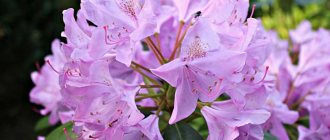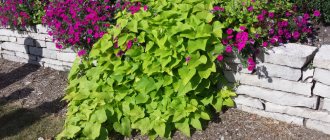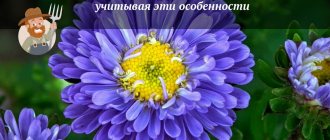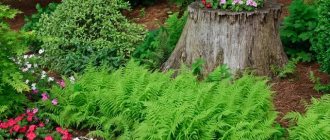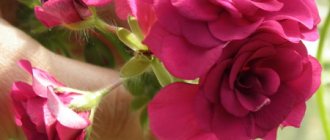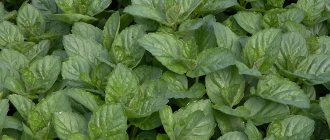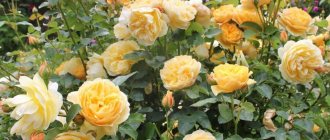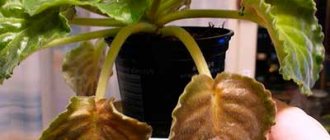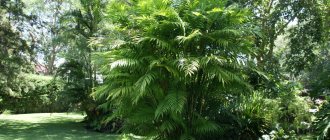Description of the alpine perennial aster
The flower grows in the temperate climate of the northern hemisphere; its usual habitat is plains and high-mountain meadows.
The height of the bush is from 15 to 35 centimeters, the stems are pubescent, erect. The plant is highly branched, elongated leaves are located directly on the shoot. The underground part is represented by an overgrown horizontally oriented root system.
The leaves are found in abundance in the lower part of the plant, becoming small and sparse towards the top. With its entire appearance - the yellow center (these are tubular petals), the arrangement of the reed petals, the aster resembles a daisy. The diameter of flower baskets reaches 6 centimeters, but more often 3-4 cm.
Flowering begins early, in late May - early June and lasts 30 days. Until winter, the plant does not lose its attractiveness and disappears into winter along with its green leaves. This beautiful, unpretentious perennial winters well without shelter in northern latitudes.
Alpine chamomile has been known as a garden plant for more than 5 centuries. During this time, many varietal varieties were bred and the flowers were enlarged. The colors are the most varied: pink, white, lilac and purple, blue and dark blue. Only the yellow core remains unchanged.
Landscape designers tastefully decorate local areas and park areas with decorative squat bushes. Due to the fact that the flower grows quickly, it eventually forms covers that have a very lush appearance.
On the domestic map there are several territories where the alpine perennial aster is recognized as a rare and endangered species. It is also a medicinal plant and helps with some ailments.
Possible problems in growing
Many varieties are not susceptible to pests and diseases.
Problems with leaves
Wilting occurs from insufficient watering and bacterial damage to the roots.
Pests
Aphids are destroyed with insecticides, spider mites - with acaricides. Twice treatment at weekly intervals is sufficient.
Diseases
Rust and wilt are eliminated with fungicides. For prevention, soil treatment is carried out.
Signs of improper care
An excess of nitrogen reduces flowering; a lack of phosphorus and calcium reduces the size of flower heads.
Aster is suitable for borders, parquet lawns, rocky corners of the garden. The flower has captivated gardeners with its long flowering period and variety of shades. The plant is not demanding on soil, care, or lighting. Aster peacefully coexists with other crops and conifers.
Varieties
Gloria
The flowers are blue, 3 centimeters in diameter. The bush is low, only 20 cm.
Goliath
Large pale purple flower heads distinguish this species.
Albus
A low-growing bush up to 20 centimeters has white flowers. Characterized by lush flowering and a large number of green leaves.
Astra blue
The color of this variety is blue with a terry sunny center. The flowers are large, sometimes up to 8 centimeters, and the bush itself is relatively tall - it can grow up to half a meter. Blooms for a long time.
Rosea
Bright pink flowers up to 4 cm in diameter. It grows rapidly, forming rounded caps.
Dunkle Schone
Aster of this variety has a dark purple color of small inflorescences. An effective combination is obtained if plant species of contrasting colors are placed nearby.
Happy end
Pink daisies on strong branchy bushes attract the eye. This varietal species is very common in garden compositions.
Superbus
Lilac flower baskets are 3.5-4 centimeters in diameter.
Ruber
Rich pink-red hue and medium-sized flowers and bushes.
In addition to individual varieties, perennial mixtures look interesting. Complementing and shading each other, differently colored flowers create a truly magnificent sight.
When and how does it bloom
On average, flowering of each variety lasts 30-45 days.
The inflorescence is a basket in which the central tubular flowers have short yellow corollas, and the outer tier is formed of long flowers of pink, white, blue, and purple. Some hybrids may have a basket entirely of one shade.
The shape of the inflorescence is usually similar to a daisy, whose long petals can have a simple, pointed shape with a wavy edge.
Most of the varieties available for sale bloom in May-June, but in nurseries you can also find others that bloom towards the end of summer.
When the bushes bloom, their water consumption increases significantly. If the rest of the time, if there is enough rain, the planting can not be watered at all, but during flowering, watering is necessary every week. If the seeds are not needed, dry flowers are removed to make the bushes look more beautiful.
Planting and propagation
This species of aster is planted in different ways: in open ground with seeds, seedlings, propagated by dividing the bush and cuttings.
Seeds in open ground
Can be sown in early spring (late April) or summer or autumn. A cold-resistant plant germinates well, provided that the seed material is not old.
When collecting your seeds from faded baskets, you must remember that varietal characteristics may not be transferred to a new bush.
Make furrows in the garden bed and direct sowing, plant the seeds, water and cover with film. In such a greenhouse they will quickly hatch. After the seedlings show 2-3 leaves, they can be planted in the right place.
Perennials usually bloom in the second year if they are planted in summer or autumn. But those planted in April may produce little flowering this year.
We sow seedlings
In February or early March, alpine aster is sown at home.
- Equip containers with drainage holes;
- The soil should be light, fertile, it is better if the soil is from a special store;
- The seeds are not buried, but laid out on a damp surface and lightly sprinkled with earth;
- Spray from a spray bottle and cover with film;
- Dive when 2-4 true leaves appear;
- In May, the seedlings are gradually accustomed to the coolness, taken out to the veranda or other room;
- At the beginning of June we plant the seedlings in the ground outside;
- Planting is done in dug up beds with loose, drained soil;
- Planting scheme for low-growing and medium-growing perennials 30-50 centimeters between specimens.
Reproduction by dividing the bush
Alpine aster can grow in one place for a long time, but it does not reproduce by self-sowing. To renew plantings and obtain new bushes, division of the root system is used.
A plant (three years old or more) is dug up in the fall after flowering or in the spring. A part of the root is separated along with the upper stems. Transplant into a prepared place, maintaining the required distance.
With this method of propagation, the plant retains all the signs of the mother bush. This procedure is carried out every 3-4 years.
Cuttings
This method of propagating alpine chamomile is also available, while the characteristics of the parent plant are fully preserved. The procedure is performed in the summer.
- Cut off the tops of young shoots, the recommended cutting height is 5-6 centimeters;
- Make sure that there are three leaves left on it;
- We bury the cuttings into the prepared loose substrate, moisten them and place them in partial shade;
- Cover the planting with a fiber cover;
- After a month, roots appear;
- Now the plant can be transplanted to a permanent place outside.
The perennial aster does not require careful supervision. You need to water moderately, making sure that the water does not stagnate. During flowering, the soil should be moistened more.
Attention! If the place chosen is sunny and open, the flower will delight you with abundant development and stable flowering. In the shade it may not bloom at all; this should be taken into account when choosing a place for planting.
It prefers water- and breathable, light soil. When the roots are exposed, they need to be sprinkled or the bush should be replanted, deepening it to the required depth.
The plant can degenerate and become a little smaller. Regular transplantation and renewal will help prevent such developments.
Planting without seedlings
Perennial aster - shrubs
It is difficult to grow a perennial in a permanent place; you need to constantly care for the seedlings. Seeds are sown immediately after the snow melts and covered with film. In a couple of weeks, shoots will appear. Plantings are loosened, thinned out or pruned, leaving 30 to 5 cm between bushes, depending on the width of the crown being formed. At the end of summer, the buds that appear are cut off and the aster is given the opportunity to take root.
Note! It is allowed to sow seeds before winter, in frozen soil.
What is sick?
In very humid weather or if the location of the flower is chosen incorrectly, the roots rot and black mold appears. Powdery mildew forms on the leaves. The affected parts of the plant are thrown away, and the rest is sprayed and treated with antifungal drugs, as well as Bordeaux mixture.
Attacks aster and aphids. The leaves captured by it are not able to grow well, and flowers cease to form. They simply do not have enough strength for this - aphids suck the juices from the shoots.
Effective methods help against all insect pests (slugs, caterpillars, mites) - spraying with an ash or soap solution, or a mixture of both. You can also dust the space under the flower with wood ash.
Boarding instructions
Growing aster by simple sowing is a delicate matter. This perennial with small seeds is best sown for seedlings in fine soil, at a distance of 2.5 to 3 cm from each other. To a depth of up to 2 cm. Germinates in 15 to 25 days with an optimal soil temperature of +20 to +25 degrees. Germination is improved by pre-chilling the seeds in the refrigerator two to three weeks before planting.
Alpine aster grows best when sown in a planting container, as such a habitat is easier to control. Fill the container with light, airy, sterilized soil; the container itself must have drainage holes. Cultivation by sowing seeds into the soil occurs by direct sowing, covering with a thin layer of dry soil. For the best contact of seeds with the soil, they are lightly pressed. Next, cover the container with newspaper to reduce evaporation and keep the soil moist until seedlings begin to appear. After this, immediately remove the cover, otherwise the seedlings will not begin to germinate.
When the seedlings show their first green leaves, you will need water with a liquid solution of Kemira complex fertilizer, strictly according to the instructions. Repeat fertilizing every two weeks, placing the container in the sun.
When the seedlings have their first set of true leaves, they need to be transplanted into separate plastic pots. Next, the plants grow in full sun, with cool nights, from +10 to +14 at night. After the last frost, it is necessary to move the pots outdoors until the plants are well hardened and have a height of 5 to 8 cm, then they are planted in a permanent place. Planted in the evening in pre-watered holes. After planting, the seedlings are immediately watered with water with the addition of ½ liter per bucket of water, a liquid solution of potassium humate, to reduce the shock of transplantation. Keep new plantings moist and continue infrequent but even watering until flowering stops.
Place in landscape design
Alpine aster blooms for a long time and goes well with many plants and shrubs. This is a kind of background that can be supplemented with anything.
Flowers, having similar colors, but having different shapes, are in great harmony with this modest flower: border bearded irises, violets, bergenias, geraniums.
Multi-colored flower arrangements also benefit visually. You can plant yellow loosestrife and multi-flowered euphorbia, and sedum prominently next to the alpine perennial.
Shrubs such as white and variegated dogwood, Thunberg barberry, and Japanese spirea will be good neighbors for the small, simple aster.
Thyme and different types of ornamental grasses should be combined in plantings with all varieties of this species.
Since flowering is early, it will be great to combine plantings of low perennials with other types of asters (middle and late) - September, October, Belgian and other varieties.
The beauty of the Alpine aster can be appreciated both in single and group plantings. This is an excellent border and ground cover plant.
- Flower beds of all types: ridges, rock gardens and rockeries, mixborders;
- As a balcony and potted plant for landscaping terraces, verandas, gazebos;
- Decoration of the banks of small artificial reservoirs;
- Rocky Japanese gardens.
Vigorous lush flowering, combined with unpretentiousness in maintenance, simply obliges you to acquire this plant. A unique, delicate flowering bush will be a favorite of the garden - it will be one of the first to bloom, will require a minimum of attention, and its lush forms will become the highlight of your site.
General description and main varieties
Alpine aster is a perennial herbaceous plant of the Asteraceae family. As for representatives of this family, aster blooms quite early - in late May or early June. The flowers of the plant are not large, their diameter does not exceed 5-6 cm. In appearance, the perennial alpine aster resembles a chamomile, but differs from it in the variety of colors, which is why it has won the love of summer residents.
White, blue, purple, lilac and pink asters grow in lush bushes no more than 30 cm high. The plant is excellent for decorating hills and rockeries, ordinary flower beds.
Breeders have developed many varieties of alpine aster. The following are most often found on private plots:
- Albus - white flowers with a yellow-green center, bloom in early summer.
- Goliath - flowers of lilac and deep purple color, diameter - up to 6 cm. The beginning of flowering period is June.
- Superbus - the plant has lilac-blue flowers with a diameter of no more than 3 cm.
- Helen Beauty is a semi-double variety, the flowers have a bright deep purple color.
- Wargrave - flowers are pale pink with a bright yellow center, the diameter of the inflorescences is 3-4 cm.
- Ruber - unusually beautiful asters of red-pink color, flowers up to 4 cm in diameter.
- Happy End - the variety is distinguished by early flowering. Flowers bloom in May. The color of the inflorescences is pink.
The best selection of beautiful photos and pictures of daisies
Tenderness is like a gift
It is customary to give flowers for any holiday or for various events. For men and women, for children and adults, yellow daisy is the best and most suitable gift. And we offer a new, unusual approach. We offer not only to present live plants, but also to expand the range of surprises for our family and loved ones.
What will it be, a photograph or a picture, which was drawn by a professional or an amateur, but all the works are interesting, delicately beautiful, and reveal one or another idea. They visually convey your words so clearly that the child will understand the essence of such a surprise. After all, even a photo of field daisies can surprise and lift your spirits!
These cards will help bring us closer to our loved ones. It will be a huge plus if the person dear to us is far away. These daisy flowers will make us closer. They are able to hide the distance by bringing our loved one closer to us and giving us the opportunity to tell him about our feelings.
Beautiful daisies in a vase can solve another problem. Imagine how difficult it is sometimes with such a fast pace of life to remember everything and always do everything correctly and on time. It’s easy to forget even the most important things, such as the day you met your loved one, the Spring Festival, or even your birthday. Then drawn pictures will come to the rescue. You can always, even at the very last moment, give a wonderful gift, delicate flowers in a jug.
Give flowers to yourself
Isn't it nice to give yourself good surprises? Should you start the day with a smile, or cheer yourself up before work? And all this can be easily achieved if you install good pictures with daisies on your desktop.
Warm flowers like the sun will give you positive emotions. Whether it’s a photo on your desktop or pictures of daisies on your phone, we should be surrounded only by beautiful and kind things, and then our life will become much more beautiful.
Greeting cards with daisies
Lots of pictures of daisies
Growing from seeds
Alpine aster seeds ripen in late July or early August. They are flattened, obovate-shaped achenes with a small white “tuft.” When sown directly in the ground, seeds rarely germinate normally, especially when it comes to early flowering varieties. In the conditions of the cold Russian spring, it is difficult to obtain well-warmed soil, so seed germination deteriorates. First, the seeds are sown at home, then the grown plants are transplanted into open ground.
In order for seeds to germinate successfully at home, it is recommended to adhere to the following rules:
- For sowing, prepare small boxes filled with nutrient substrate.
- Seeds are sown in moist soil, and the ambient temperature should be at least +20° C.
- Boxes with sown seeds are covered with glass or film.
- When seedlings appear, the temperature in the room is lowered by two degrees, or the boxes are moved to a cooler place.
- When 3-4 leaves appear on the sprouts, they are dropped into separate peat cups.
- At the beginning of May, the plants are taken out to the balcony or outside during the daytime so that the asters get used to the street conditions.
- When warm weather sets in, the plants are planted in open ground.
- Choose a sunny place for planting.
- The soil in the area where the aster will be planted must be fertile. What plants need most is calcium.
- The flower does not like high humidity, so the area should not be too low and water should not stagnate on it.
- Asters can grow in one place for up to five years. Then the bushes are divided, discarding the old ones, and transferred to other areas.
If you come across a variety that you want to have in your garden plot, but there is no way to collect seeds, you can propagate the flower using apical cuttings. Its length should be at least 6 cm. After cutting, the cuttings are planted in the shade in moist, fertilized soil and covered with a glass jar or a cut plastic bottle. Within a month the plant will take root.
You can also propagate your favorite alpine beauty by dividing adult bushes.
How to grow flowers correctly.
The variety is very unpretentious and is cultivated outdoors. But in order for flowering to be long and widespread, favorable conditions for the life of the Alpine aster are necessary.
If the place is well lit, then the bushes will grow and acquire a dense, voluminous appearance.
If you lay a drainage layer at the planting site, this will increase the adaptation of flowers to new conditions, therefore, more plants will take root.
When plants bloom, they require a lot of watering.
Some varieties, especially tall ones, need to be fed regularly.
When frosts occur in the autumn season, the bush is pruned to the level of the root collar.
When pruning is done in the spring, frozen branches should be removed at the same time.
When parts of the root system are exposed, the asters are transplanted or sprinkled with soil.
Varieties that quickly degenerate are dispersed, their healthy fragments separated.
In the southern and middle latitudes there is no need to cover asters for the winter; in the north, shelter is provided with spruce branches or dry moss.
Diseases and pests
Alpine aster is rarely affected by diseases, but in damp and rainy summers powdery mildew may appear. This is a fungal disease that appears as a gray-white coating on the stems and leaves. They fight powdery mildew with the help of Topaz or Fundazol. The products are diluted in water according to the instructions, and the plants are sprayed at least twice.
If asters grow in waterlogged soil, fusarium may develop - rotting of the roots. Plants become brown in color and die over time. At the first signs of disease, the affected plants are removed by the roots, and measures are taken to help drain the area.
Asters can be attacked by the following insect pests:
- cutworm caterpillars;
- spider mites;
- slugs;
- meadow bug;
- slobbery pennitsa.
Insect pests are controlled using insecticides that are sold in agricultural stores.
Thanks to their beauty and unpretentiousness, alpine asters quickly win the hearts of summer residents; Having planted the plants once on their site, the owners will never give up the charm and colorful colors of asters.
Reproduction by dividing the bush
Reproduction of alpine aster by dividing a bush photo
They are mainly propagated by dividing the bush . The best time for this operation is May - September. The divisions are grown at a distance of about 15 cm from each other. When they develop, they can be planted in open ground. They are also propagated by seeds, which quickly lose their viability, and sown in a nursery from April to July or before winter, provoking natural stratification.
Perennial alpine aster: planting, care, photo
The perennial alpine aster can be an excellent decoration for a summer cottage, garden or balcony. This flower is highly valued for its ease of care. If you want the perennial alpine aster - planting and care, photos and cultivation features are presented in our article.
The main differences between the Alpine aster
Alpine aster is one of the varieties of the genus of herbaceous plants called Asters. This perennial flower is widespread in many countries of the world. The main differences of the Alpine aster: • low growth - up to 35 cm; • yellow center; • petals in 2 or 3 rows; • colors - shades of red and purple, less often white; • flowering period - all summer.
Externally, the flower looks like a chamomile. We present to your attention our photo selection, which presents several varieties of perennial alpine aster.
In the photo are popular varieties of perennial alpine aster
Rules for planting perennial alpine aster
All perennial asters need plenty of sunlight. It is necessary to take this fact into account when planning to plant a flower in open ground. Never plant this plant in a flooded area. It is also worth knowing that asters love phosphate fertilizers. It is better to start care in the form of soil enrichment even before the seedling is planted in the ground. Before planting, be sure to carry out such activities as digging up the soil (to a depth of 30 cm), removing weeds and thoroughly watering. It is advisable to add lime or dolomite flour to the soil when digging.
In the photo: alpine aster seeds
Planting seeds of perennial alpine aster
In the southern regions, alpine aster seeds are sown directly into open ground in late autumn or spring, sprinkled with a centimeter layer of humus. Slightly stronger seedlings are transplanted to a permanent place. It is important that the seeds are as fresh as possible. You will be able to see colorful flowers, as in the photos provided, only after a year.
In regions with harsher climates, the seedling method of growing perennial asters is practiced. Purchased soil is quite suitable for planting seeds. The container with the sown seeds is covered with polyethylene and placed in a sunny place. When the leaves appear, the seedlings are carefully dropped into separate pots.
This is what perennial aster seedlings look like
Caring for aster seedlings includes infrequent but abundant watering. You can feed the seedlings a little with an infusion of ash. Drainage is required. From mid-spring, seedlings begin to be hardened off, and at the end they are planted in open ground.
Reproduction of perennial aster by dividing the bush
This way you can propagate flowers growing on your or any other piece of land. Perennial alpine asters must be replanted and divided every 7 years. But many gardeners note that if you do this more often (for example, once every three years), the splendor of flowering is better preserved. After digging up the roots, remove all damaged parts and treat the planting material in a disinfectant. Planting in the same place can only be done after 5 years.
Dividing the bush - the possibility of propagating perennial aster
Cutting cuttings and rooting them
From the top of the bush you need to cut a cutting 6 cm long. It is immediately planted in prepared soil consisting of turf soil, sand and peat, and covered with agrofibre. Caring for cuttings before rooting involves regular watering. In about a month they will take root and can be transplanted to a permanent location.
How to provide proper care for perennial aster
As noted at the beginning, the perennial alpine aster is an unpretentious plant. But this does not mean that once you plant it, you can completely forget about it, ignoring the basic rules of care. The plant may not please you with the full beauty of its flowering if it experiences an acute lack of moisture, is overgrown with weeds, and the ground around is not regularly loosened. A good way to retain moisture and prevent the formation of weed thickets is to mulch the soil.
Dried flower stalks must be removed immediately so that the plant does not waste energy on them. If the region experiences severe winters, sprinkle the plant with sand or soil in the fall. Organic fertilizers should be periodically applied to soil with low humus content. Feed asters with preparations containing nitrogen, potassium and phosphorus. You can add lime to the fertilizer.
Perennial alpine asters are responsive to feeding
Diseases of perennial aster and the fight against them
Asters are often susceptible to the following diseases: • Blackleg is a common fungal disease. Blackening and rotting of the plant occurs. Control method: immediately remove affected shoots and water the soil with an appropriate fungicide. • Rust - the disease is manifested by swelling and drying of leaves. Bordeaux mixture helps in the battle. • Fusarium is a fungal disease of perennial asters, manifested by yellowing and wilting of the plant. All affected parts must be burned. For prevention, it is important to transplant asters to a new location.
Plant care
Alpine aster is a perennial, easy to care for. It is necessary to ensure timely watering of the plant (infrequently, but plentifully) and loosening the soil, weeding. Lack of moisture can lead to loss of decorative appearance of flower baskets and their drying out. Before flowering, it is recommended to hill the crop to a height of 5-6 cm, thus accelerating the growth of the root system and its strengthening. During the flowering period, it is necessary to remove dried plants.
Remove weeds from flower beds in a timely manner so that they do not interfere with the growth and development of the aster
The flower is frost-resistant, but for frosty winters it is recommended to mulch the perennial with soil or sand, taking into account that the plant buds must be covered.
Alpine aster. Planting and care. Reproduction
The world of flora never ceases to amaze and fascinate with its splendor. A separate group of universal perennials allows you to create flower beds that are stunning in their beauty and uniqueness. Alpine aster, blue alpine daisy, mountain aster - this is all the name of one species of the Asteraceae family, perfect for creating a rock garden.
The basket-shaped flowers of cultivated garden species are particularly decorative; they are larger, 3-6 cm in diameter and can be white, purple or pink in color with a yellow, terry center formed from many small tubular petals.
Alpine aster. Features of planting and care
Despite the fact that alpine aster is quite unpretentious, to obtain the most decorative color effect and beautiful shape of the bushes, well-drained soil is required, without special requirements for acidity. Fertilized, carefully dug loamy soil with a high calcium content will guarantee more decorative, abundant and long-lasting flowering. Light soils require regular moisture, otherwise, with prolonged drought, plants may stop flowering and lose their decorative appeal.
To obtain a good exposure, planting must be organized so that the flower garden is located on a bright, but slightly protected from direct sunlight, area oriented to the south, east or west. Species of alpine asters with an autumn flowering period must be placed in more sunny places, since in the shade they may not have time to bloom.
In order for varieties intended for autumn flowering to form buds in the same year, their planting must be organized in the spring, at a distance of 20-45 cm, after which the plantings must be thoroughly watered and constantly monitor the soil, which is always must be wet. Young shoots should not be allowed to become exposed and, if necessary, problem areas should be covered with a small, 2-3 cm layer of specially prepared soil.
It is not necessary to introduce fertilizing in the year of planting, as this can stimulate excessive leaf growth, which will negatively affect flowering. Lack of moisture during the period of bud formation can lead to premature yellowing of leaves, a decrease in the number of blossoming inflorescences, or, in general, stop the flowering process. To maintain a good aesthetic appearance, the bushes should not be allowed to grow and thicken greatly. After 3-4 years they need to be divided and transplanted to another place. In some cases, it is allowed to stay in one area, without transplanting, for 5-6 years.
Reproduction - which method is better
Propagating alpine aster by sowing seeds directly into open ground is a troublesome and unjustifiable method due to the low germination of seeds, the inability to create an optimal temperature in nature for friendly shoots, and the long waiting period from sowing to the flowering period.
The best results can be achieved by sowing seeds at the end of March or, in extreme cases, the beginning of April, in special seedling boxes or greenhouses adapted for early planting, since the seeds germinate only at a temperature not lower than +20 degrees. During the growing period, it is necessary to maintain the temperature within 15 - 18 degrees Celsius. Higher air temperatures can cause seedlings to stretch, weaken and be susceptible to disease.
After the formation of 2-3 full-fledged leaves, it is necessary to make a dive and already in May, when the soil warms up to the desired temperature and stable warm weather sets in, you can plant it in a permanent place prepared for placing a flower garden.
The method of vegetative propagation by dividing the bush is considered more acceptable and is more often used in practice than growing seedlings by sowing seeds. There is no need to dig up the entire bush; using a sharp shovel, it is enough to divide the rhizome into parts, so that on each there are several shoots left.
The distance between plantings depends on the condition of the separated part. Strong and powerful plants should be placed according to the 50x80 pattern, while weaker plants should be placed in 20x30 cm.
There is another method that is used mainly when propagating varietal alpine asters. Tops - 5-8 cm cuttings are taken from large healthy plants, planted in a darkened area in a substrate consisting of peat, rotted turf soil and sand, in proportions 1: 2: 1. Propagation by cuttings can be carried out during all warm months, starting from May and including mid-August. After 30 days, when the root system is formed, the plants can be transplanted to a permanent location.
| Have you already thought about installing an alpine slide on your site? Surely you have been haunted by questions: Where is the best place to place an alpine slide? What stones are suitable for an alpine slide? Which plants are suitable for an alpine slide, and which ones should not be used? Answers here: | |
Alpine aster. Care and protection from diseases
Timely pruning of old and damaged branches, preventing the formation of thickened and unventilated bushes, as well as maintaining optimal humidity, will protect the flower from damage by gray mold.
Good bottom ventilation, timely removal of fallen leaves, reducing humidity at the first signs of disease and treatment with special compounds will protect the plants and maintain a healthy aesthetic appearance.
There is no need to leave a heavily damaged plant on the site, as this may contribute to the spread of the disease throughout the entire area. It is very important to promptly remove and burn flowers infected with gray mold. Alpine aster is perfect for rock gardens and will fit perfectly into a rock garden that allows for a freer choice of plants. By placing this type of aster in a mixborder or in the foreground of a flowerbed, you will be able to admire not only the flowers, but also a large number of butterflies that love to visit areas where alpine flowers bloom.
Ways to grow a flower
The method of growing aster depends on the temperature conditions during the cold season.
Seeds
In regions where the winter temperature does not drop below -20 degrees and there are no long-term return colds in the spring, aster is grown from seeds. To do this, they are sown in the ground in November or May.
In a sunny area, shallow furrows (up to 1 centimeter deep) are made in loose soil. Aster seeds are pre-treated with a biostimulant to speed up the growth process and disinfected.
Since the seeds of asters are very small, they are sprinkled in the grooves with soil mixed with river sand. To avoid replanting the plants in the future, the distance between the grooves should be at least 40 centimeters. Plantings that are dense in a row are thinned out as they strengthen and grow, leaving a distance between seedlings of 15-20 centimeters.
In the first year after sowing, the aster produces a basal rosette of leaves without throwing out flower stalks. Buds appear the next year.
Seedlings
In cold regions, alpine aster is grown on site through seedlings. Sowing time is the end of February. It is necessary to prepare a plastic container with holes to drain excess water.
The drainage layer is laid out from broken bricks and expanded clay. The soil is loose. Prepared aster seeds are sown in the same way as planting in the ground. Moisten well, cover with film and place in a warm place. When the sprouts hatch, you need to move the container to a well-lit and cool place to avoid being pulled out.
When the aster has 3 true leaves, a pick is carried out, replanting the plants with a lump of earth into cups. Planting in a permanent place is carried out in May and early June, when there is no threat of frost. Asters must first be accustomed to fresh air and exposure to direct sunlight.
Asters begin hardening by taking the seedlings out onto the balcony in warm, calm weather. The first days the plants are shaded and kept for 15-20 minutes. Over the course of 15-20 days, the aster’s time in natural conditions is adjusted to the length of daylight hours, regardless of weather conditions.
As when sowing seeds, the area should not be shaded, the soil should be nutritious sandy loam, fertilized loam.
For each bush, dig a hole 2 centimeters larger than the earthen ball with roots. Planting of asters: 40 centimeters between rows, 20 centimeters in a row.
